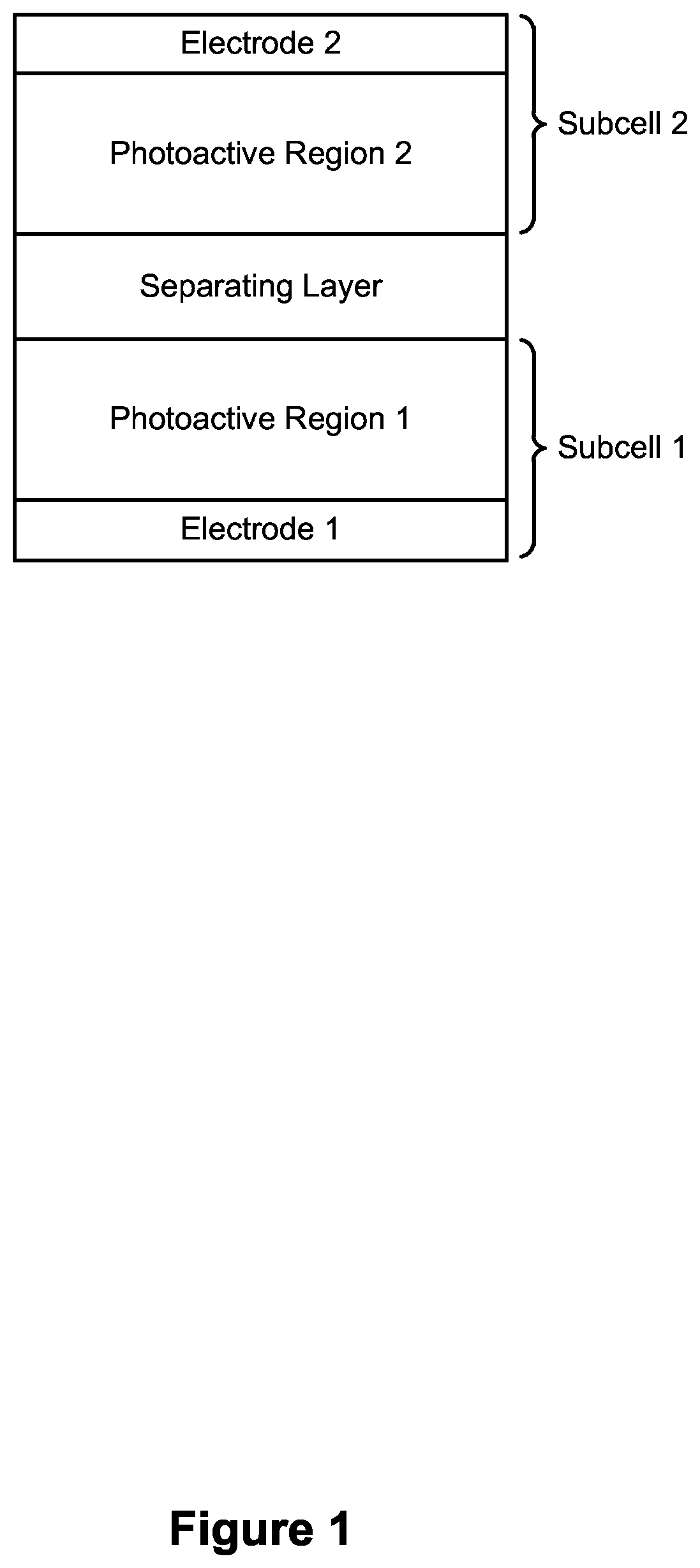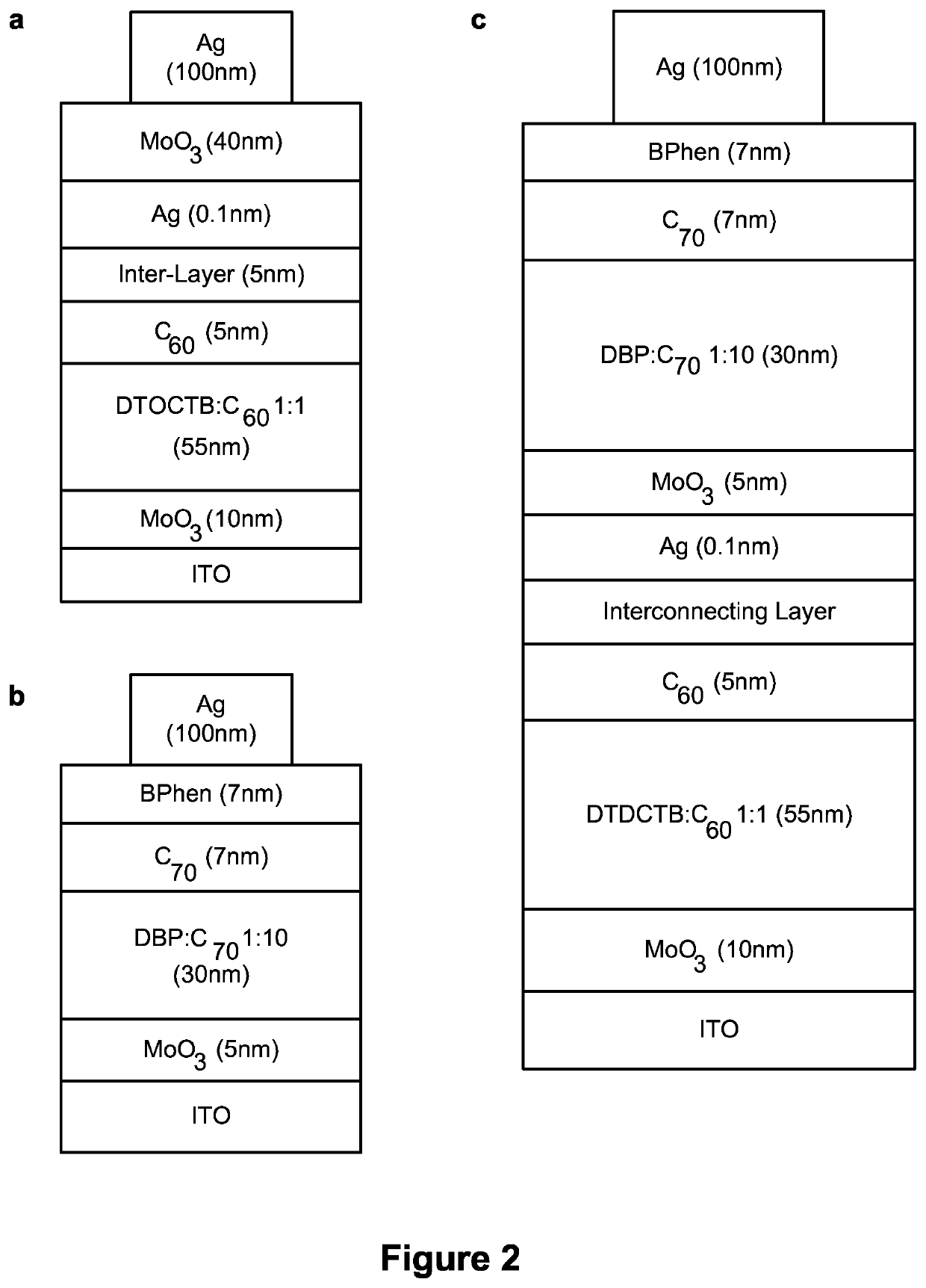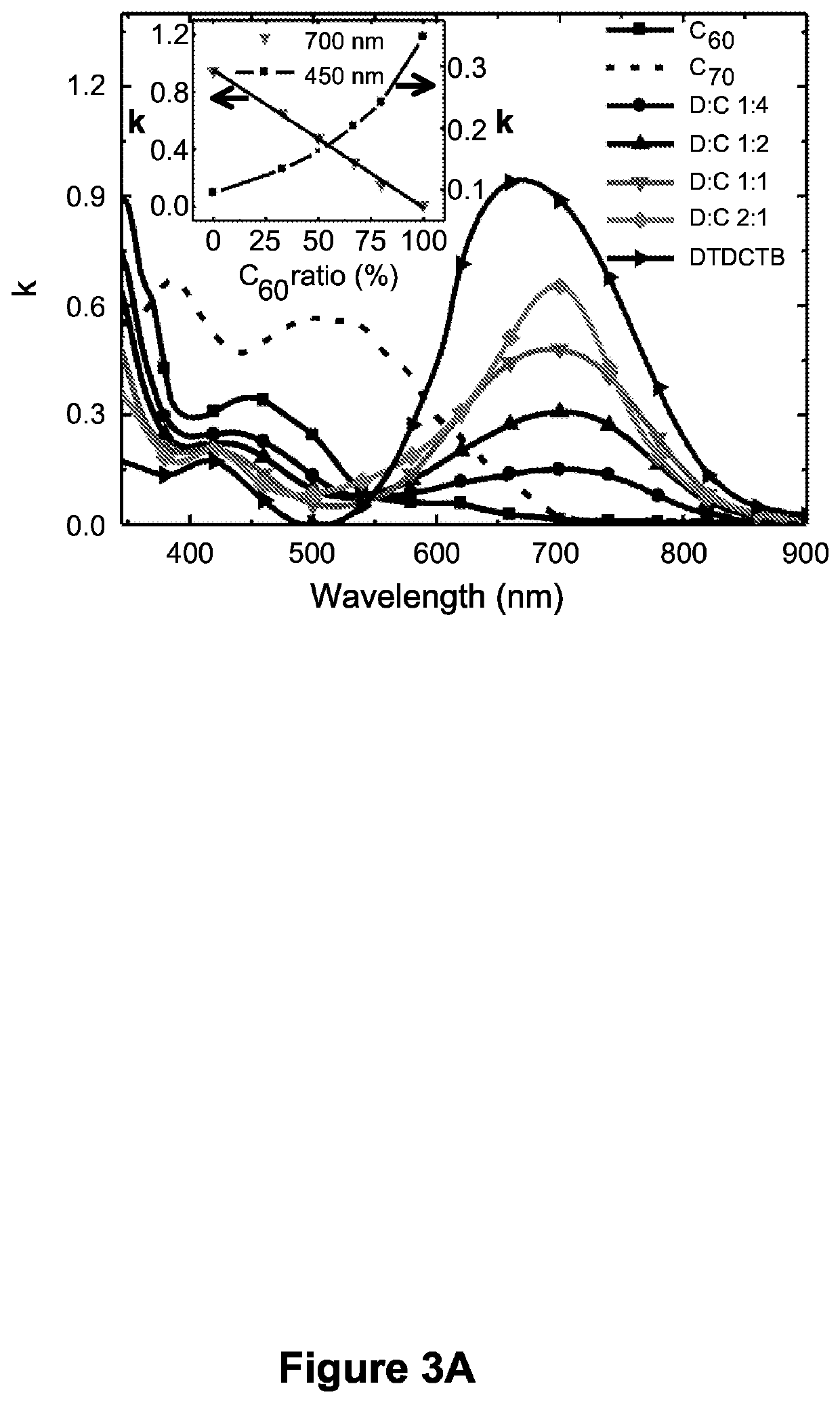High efficiency small molecule tandem photovoltaic devices
a photovoltaic device and small molecule technology, applied in the electrical field, can solve the problems of inability to exceed the product maximum total power generated by the pv device, difficult and expensive production, and difficult production of efficient crystalline-based devices, etc., to achieve the effect of minimizing spectral overlap, maximizing photocurrent, and economic production cos
- Summary
- Abstract
- Description
- Claims
- Application Information
AI Technical Summary
Benefits of technology
Problems solved by technology
Method used
Image
Examples
example 2
nsity with DTDCTB:C60 and DBP:C70 Subcells
[0099]It has been shown that optimized tandem structures employ subcells whose currents are approximately matched at the maximum power point (MPP) of operation. The power conversion efficiency penalty that is related to any mismatch in constituent subcell efficiencies is defined as:
Δη=1−(JMTVMT) / (JM1VM1+JM2VM2)
[0100]The optimal design corresponds to Δη=0. Here, JM and VM refer to the current density and voltage at the MPP. The subscript T refers to the tandem, and 1,2 refer to the two subcells. According to the simulated J-V characteristics of the subcells in FIG. 7B, the optimized tandem device in the previous example embodiment has Δη=0.6%. This is close to the ideal scenario where JMT=JM1=JM2 and MMT=VM1=VM2.
[0101]In one further tandem cell structure, the BPhen cathode buffer (7 nm, below the AG contact) was replaced with a high electron conductivity, exciton blocking compound BPhen:C60 (5 nm) / BPhen (2 nm) electron filter that reduces bim...
example 3
sub>60 and DTDCPB:C70 Subcells
[0103]As further embodied herein, a small molecule tandem solar cell may be formed with a front subcell and a back subcell. The front subcell adjacent to the transparent anode may comprise the primarily orange-to-NIR absorbing donor, (DTDCTB) blended with C60 (DTDCTB:C60). The front subcell may be paired with a UV-to-yellow absorbing (2-[(7-{4-[N,N-Bis(4-methylphenyl)amino]phenyl}-2,1,3-benzothiadiazol-4-yl)methylene]propanedinitrile (DTDCPB) mixed with C70 (DTDCPB:C70) back subcell. The chemical structure of DTDCPB is shown in FIG. 10.
[0104]In the front subcell, the C60 intermolecular charge transfer (CT) absorption feature in the green is greatly reduced when diluted in DTDCTB, thus providing a spectrally complimentary system with the back sub-cell. The resulting tandem solar cell broadly covers the solar spectrum from λ=350 nm to 900 nm, achieving a simulated efficiency of 9.8% under standard illumination. The high efficiency again utilizes the princ...
PUM
| Property | Measurement | Unit |
|---|---|---|
| thick | aaaaa | aaaaa |
| semi-transparent | aaaaa | aaaaa |
| pressure | aaaaa | aaaaa |
Abstract
Description
Claims
Application Information
 Login to View More
Login to View More - R&D
- Intellectual Property
- Life Sciences
- Materials
- Tech Scout
- Unparalleled Data Quality
- Higher Quality Content
- 60% Fewer Hallucinations
Browse by: Latest US Patents, China's latest patents, Technical Efficacy Thesaurus, Application Domain, Technology Topic, Popular Technical Reports.
© 2025 PatSnap. All rights reserved.Legal|Privacy policy|Modern Slavery Act Transparency Statement|Sitemap|About US| Contact US: help@patsnap.com



